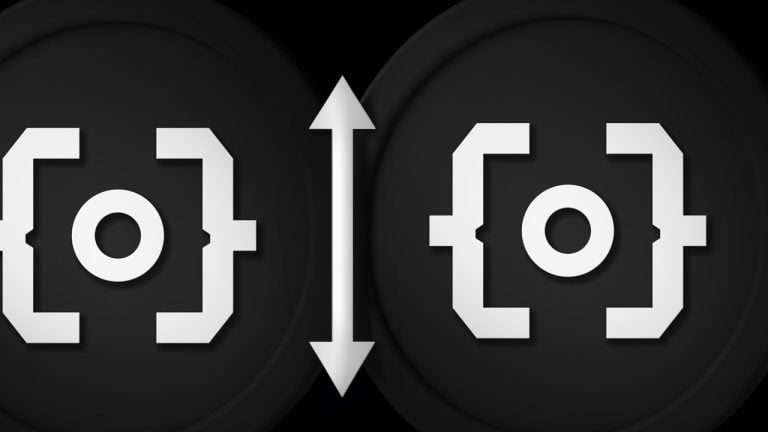Paying Down Mortgage to Remove Private Mortgage Insurance (PMI)
January 28, 2024 | by stockcoin.net


In the realm of personal finance, the topic of paying down a mortgage in order to remove Private Mortgage Insurance (PMI) is a matter of interest for many individuals. Recently, a 60-year-old individual found themselves pondering this very issue. Currently housing a $300,000 mortgage, they are contemplating using their Certificate of Deposits (CDs) to eliminate this financial burden. Possessing a collection of CDs equating to $90,000 and savings amounting to $100,000, they find themselves in the 22% income-tax bracket. As they navigate this decision-making process, one possibility is to pay down the mortgage sufficiently to eradicate PMI, thus facilitating savings on interest payments and augmenting their home equity, all while still maintaining financial flexibility. However, an alternative option is to completely pay off the mortgage altogether. Such a choice necessitates careful consideration and strategic planning in terms of potential emergencies and future expenses. Before proceeding, it is crucial to ascertain whether any fees exist for early mortgage repayment. Additionally, exploring higher CD rates and potentially investing a portion of the cash for a greater return is strongly advised. Ultimately, the choice between these options rests upon personal circumstances and financial objectives.
Understanding Private Mortgage Insurance (PMI)
1.1 What is Private Mortgage Insurance (PMI)?
Private Mortgage Insurance (PMI) is a type of insurance that protects lenders in the event that a borrower defaults on their mortgage payments. It is typically required for home buyers who put down less than 20% of the home’s purchase price as a down payment.
1.2 How Does PMI Work?
When a borrower obtains a mortgage with less than a 20% down payment, the lender may require them to pay for PMI. The cost of PMI is usually added to the monthly mortgage payments and can range from 0.5% to 1% of the loan amount per year.
If the borrower defaults on their mortgage payments and the lender forecloses on the property, the PMI policy will reimburse the lender for a portion of the outstanding loan balance. This provides a level of protection for the lender, as it mitigates the financial risk associated with higher loan-to-value ratios.
1.3 Why Do Lenders Require PMI?
Lenders require PMI for borrowers who have a loan-to-value ratio (LTV) above 80%. This is because borrowers with smaller down payments are considered to be at a higher risk of defaulting on their mortgage payments. By requiring PMI, lenders are able to reduce their potential losses in the event of a foreclosure.
PMI allows lenders to provide mortgage financing to borrowers who may not have enough funds to make a substantial down payment. It also enables borrowers to become homeowners sooner, without having to save for a larger down payment.
2. Pros and Cons of Paying Down Mortgage
2.1 Pros of Paying Down Mortgage
2.1.1 Saving on Interest Payments
One of the primary advantages of paying down a mortgage is the potential for significant savings on interest payments over the life of the loan. By reducing the outstanding loan balance, borrowers can decrease the amount of interest that accrues over time. This can result in substantial long-term savings.
2.1.2 Increasing Equity in the Home
Paying down a mortgage also allows borrowers to build equity in their home at a faster rate. Equity represents the portion of the home’s value that the homeowner truly owns. As the mortgage balance decreases, the homeowner’s equity increases. This can provide a sense of financial security and can be beneficial when it comes time to sell the property.
2.1.3 Maintaining Cash Buffer
By paying down a mortgage, borrowers can also maintain a cash buffer. This can be especially important for individuals who may be nearing retirement or who have other financial obligations. Having cash on hand can provide a sense of financial security and can be used for unexpected expenses or emergencies.
2.2 Cons of Paying Down Mortgage
2.2.1 Potential Lack of Liquidity
One potential downside of paying down a mortgage is the potential lack of liquidity. Once funds are used to pay down the mortgage, they are no longer easily accessible for other financial goals or emergencies. This may limit the borrower’s financial flexibility and could potentially result in the need to take on additional debt in the future.
2.2.2 Loss of Potential Investment Returns
When funds are used to pay down a mortgage, they are no longer available to be invested in other assets that may generate a higher return. If the return on investment in the market exceeds the interest rate on the mortgage, borrowers may miss out on potential gains by paying down their mortgage instead of investing those funds.
2.2.3 Additional Fees for Early Repayment
Some mortgages may have prepayment penalties or fees associated with early repayment. It is important for borrowers to carefully review the terms of their mortgage agreement to determine if any additional costs would be incurred by paying down the mortgage early. These fees can eat into potential savings and should be considered in the decision-making process.
3. Assessing Personal Financial Situation
3.1 Mortgage Details
In this scenario, the individual has a $300,000 mortgage. It is important to consider the interest rate, term, and remaining balance of the mortgage when evaluating the potential impact of paying down the mortgage.
3.2 Current Savings and CDs
The individual currently has $90,000 in Certificate of Deposits (CDs) and $100,000 in savings. These funds can potentially be used to pay down the mortgage or invested to generate additional income.
3.3 Tax Bracket Considerations
The individual is in the 22% income-tax bracket. This information is important when evaluating the potential tax implications of paying down the mortgage and assessing the overall impact on the individual’s financial situation.
4. Calculating Mortgage Payments to Remove PMI
4.1 Understanding PMI Threshold
To remove PMI, borrowers need to reach a certain threshold in terms of their loan-to-value ratio. This threshold is typically 80% of the original appraised value of the home. By calculating the current loan-to-value ratio, borrowers can determine the amount they need to pay down their mortgage to remove PMI.
4.2 Calculating Principal Payments Needed
To calculate the principal payments needed to reach the PMI threshold, borrowers can subtract the current appraised value of the home from the outstanding loan balance. The difference represents the amount that needs to be paid down to remove PMI.
4.3 Analyzing Affordability and Cashflow
Borrowers should carefully evaluate their affordability and cashflow before deciding to pay down their mortgage. It is important to ensure that paying down the mortgage does not put undue financial strain on the individual or deplete their cash reserves. A thorough analysis of income, expenses, and financial goals should be conducted to determine the feasibility of paying down the mortgage.
5. Exploring Alternatives to Pay Down Mortgage
5.1 Option 1: Paying Down Mortgage Gradually
One option is to pay down the mortgage gradually over time. This allows borrowers to make extra principal payments on a regular basis, reducing the outstanding loan balance and potentially removing PMI. However, this option requires discipline and consistency in making additional payments.
5.1.1 Advantages and Disadvantages
The advantages of paying down the mortgage gradually include a reduction in interest payments, increased home equity, and the potential for removing PMI. However, this approach may take longer to see significant results and may require a longer time commitment.
5.1.2 Evaluating Potential Savings
Borrowers should evaluate the potential savings by using online mortgage calculators or consulting with a financial professional. By comparing the total cost of interest payments with and without PMI, borrowers can determine the potential savings over the life of the loan.
5.2 Option 2: Paying Off Mortgage entirely
Another option is to pay off the mortgage entirely. This would require a substantial amount of funds, such as the CDs and savings mentioned earlier. However, this option should be carefully considered.
5.2.1 Evaluating Financial Stability
Before paying off the mortgage entirely, borrowers should evaluate their financial stability. This includes assessing their cash reserves, income sources, and potential expenses. It is important to ensure that paying off the mortgage does not leave them financially vulnerable.
5.2.2 Future Planning and Emergency Funds
Paying off the mortgage entirely may require careful planning for future expenses and emergencies. Without the liquid assets that were used to pay off the mortgage, borrowers should consider creating an emergency fund and having a solid plan for any future financial obligations.
6. Shopping Around for Higher CD Rates
6.1 The Importance of Comparing Rates
When considering using CDs to pay off the mortgage, it is important to shop around for higher CD rates. Different financial institutions offer varying rates, and finding the highest rate can maximize the return on investment.
6.2 Researching Financial Institutions
Borrowers should research different financial institutions and compare their CD rates, terms, and fees. It is important to consider the reputation and stability of the institution to ensure the safety of the investments.
6.3 Maximizing Return on Investment
By choosing the financial institution with the highest CD rates and strategically investing in CDs with different maturity dates, borrowers can maximize the return on their investment. This can help offset the potential loss of investment returns from paying down the mortgage.
7. Considering Investment Opportunities
7.1 Assessing Risk Tolerance and Time Horizon
Before making any investment decisions, borrowers should assess their risk tolerance and time horizon. Understanding the individual’s comfort level with risk and their investment goals can help guide investment decisions.
7.2 Diversification of Investment Portfolio
Diversification is an important strategy to minimize risk and maximize potential returns. Instead of using all the funds to pay down the mortgage, borrowers may consider diversifying their investments by investing in various assets such as stocks, bonds, or mutual funds.
7.3 Consultation with Financial Advisor
Borrowers may find it beneficial to consult with a financial advisor to evaluate different investment opportunities and create a well-rounded investment strategy. A financial advisor can provide personalized advice based on the individual’s financial goals and risk tolerance.
8. Weighing Personal Circumstances and Financial Goals
8.1 Evaluating Short and Long-Term Goals
When making the decision to pay down the mortgage or explore alternative investment opportunities, borrowers should consider their short and long-term financial goals. This includes assessing retirement plans, saving for education expenses, and other financial priorities.
8.2 Considering Retirement Plans
For individuals in their 60s, it is important to consider retirement plans. Assessing the individual’s retirement savings, income sources, and potential expenses can help determine the best course of action regarding the mortgage.
8.3 Balancing Financial Security and Growth
Ultimately, the decision to pay down the mortgage, invest in CDs, or explore alternative investment opportunities should balance financial security and growth. Borrowers should evaluate their risk tolerance, financial goals, and personal circumstances to make an informed decision that aligns with their long-term plans.

RELATED POSTS
View all





